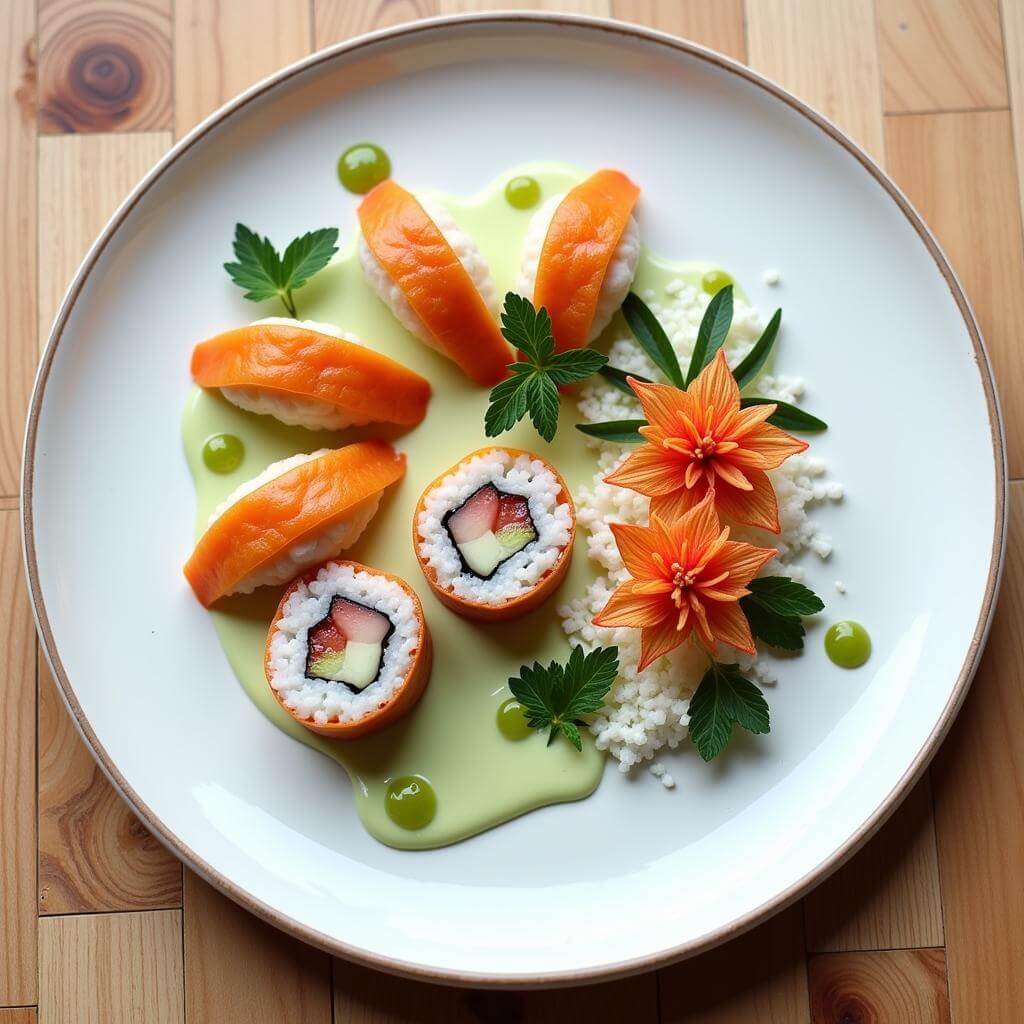Describing a food that brings back childhood memories is a popular topic in IELTS Speaking tests. This theme allows candidates to showcase their ability to express personal experiences, emotions, and cultural insights. Let’s explore how to effectively tackle this topic and achieve a high score in your IELTS Speaking exam.
Part 1: Introduction and Interview
In this section, the examiner may ask general questions about food and childhood memories. Here are some potential questions and sample answers:
- What’s your favorite childhood food?
- Do you still enjoy the same foods you liked as a child?
- How has your taste in food changed since childhood?
Let’s focus on the first question:
Question: What’s your favorite childhood food?
Band 6-7 Answer:
“My favorite childhood food is probably spaghetti. I remember my mom used to make it every Sunday, and I always looked forward to it. It was simple but delicious.”
Band 8-9 Answer:
“Without a doubt, my favorite childhood food is my grandmother’s homemade apple pie. The aroma of cinnamon and nutmeg wafting through the house on Sunday afternoons is etched in my memory. The perfect balance of tart apples and sweet, flaky crust was simply irresistible. Even now, the mere thought of it transports me back to those carefree days spent in her cozy kitchen.”
Part 2: Long Turn
Here’s a sample cue card for this topic:
Describe a food that brings back childhood memories
You should say:
- What the food is
- When you first had it
- How often you ate it in your childhood
- And explain why this food brings back memories for you
Band 6-7 Answer:
“The food that brings back childhood memories for me is homemade chocolate chip cookies. I first had them when I was about 5 years old. My mom used to bake them on weekends, and the smell would fill the whole house. We’d eat them almost every weekend, usually on Sunday afternoons.
These cookies bring back memories because they remind me of happy times with my family. We’d all gather in the kitchen, and my sister and I would help mix the dough and put the cookies on the baking sheet. The best part was eating them warm from the oven with a glass of cold milk.
Even now, whenever I smell chocolate chip cookies baking, it takes me right back to those days. It’s a simple food, but it holds so many good memories for me.”
Band 8-9 Answer:
“The culinary delight that instantly transports me back to my childhood is my grandmother’s meticulously crafted beef pho. I was first introduced to this aromatic Vietnamese soup at the tender age of six, during a memorable family gathering.
Throughout my formative years, this comforting dish became a Saturday morning ritual. The anticipation would build as I’d wake to the tantalizing aroma of beef bones and spices simmering for hours.
This seemingly simple yet complex dish holds a special place in my heart for several reasons. Firstly, it was a labor of love from my grandmother, who would rise at dawn to begin the intricate process. The careful preparation and attention to detail she poured into each bowl was a tangible expression of her affection.
Moreover, pho was the centerpiece of our family’s weekly gatherings. Clustered around the dining table, slurping noodles and trading stories, we forged bonds that have stood the test of time. The shared experience of enjoying this soul-warming soup created a sense of unity and belonging that I cherish to this day.
Perhaps most poignantly, pho serves as a cultural bridge to my Vietnamese heritage. Growing up in a multicultural environment, it was a delicious reminder of my roots and the rich culinary traditions passed down through generations.
To this day, the complex interplay of flavors – the fragrant star anise, the tender slices of beef, and the fresh herbs – can instantly evoke a flood of nostalgic memories. It’s not just a meal, but a time machine that whisks me back to those carefree childhood Saturdays, filled with love, laughter, and the comforting embrace of family.”
Follow-up questions:
- How has your taste in food changed since childhood?
- Do you think children today eat differently from when you were young?
- What role does food play in preserving cultural heritage?
Let’s focus on the third question:
Question: What role does food play in preserving cultural heritage?
Band 6-7 Answer:
“Food is very important for preserving cultural heritage. Traditional dishes are passed down through generations and help keep cultures alive. When people move to new countries, they often maintain their food traditions, which helps them stay connected to their roots.”
Band 8-9 Answer:
“Food plays a pivotal role in preserving cultural heritage, acting as a tangible link to our ancestral past. Traditional culinary practices are often deeply intertwined with a culture’s history, values, and way of life. They serve as a living archive of a community’s agricultural practices, religious beliefs, and social customs.
Moreover, food acts as a powerful vehicle for cultural transmission. Recipes passed down through generations carry with them stories, memories, and traditions that might otherwise be lost. In an increasingly globalized world, maintaining these culinary traditions can be a form of cultural resistance, helping communities retain their unique identities.
Furthermore, food often serves as a cultural ambassador, allowing people from different backgrounds to experience and appreciate diverse cultures through their taste buds. This culinary exchange can foster cross-cultural understanding and appreciation, bridging divides and promoting cultural diversity.
In essence, food is not just sustenance, but a rich tapestry of cultural expression, preserving heritage in a form that can be shared, celebrated, and savored across generations and borders.”
Part 3: Two-way Discussion
In this section, the examiner will ask more abstract questions related to the topic. Here’s an example:
Examiner: How do you think globalization has affected traditional foods in different cultures?
Band 6-7 Answer:
“Globalization has had a big impact on traditional foods. On one hand, it’s made it easier to find ingredients from all over the world, so people can make traditional dishes even if they’re far from home. But on the other hand, fast food and international cuisine are becoming more popular, which might mean some traditional foods are being eaten less often.”
Band 8-9 Answer:
“Globalization has had a profound and multifaceted impact on traditional foods across cultures. On the positive side, it has facilitated cultural exchange, allowing people to experience diverse cuisines without leaving their home countries. This cross-pollination of culinary traditions has led to innovative fusion dishes that blend elements from multiple cultures, enriching the global food landscape.
Moreover, globalization has improved access to exotic ingredients, enabling diaspora communities to recreate authentic dishes from their homelands and maintain their culinary heritage. This has also allowed for the global popularization of once-regional dishes, such as sushi or pizza, elevating them to international status.
However, there are also concerning aspects to consider. The homogenization of food culture, driven by multinational fast-food chains and processed food industries, poses a threat to local culinary traditions. In many places, traditional foods are being supplanted by more convenient, often less nutritious alternatives.
Additionally, the global demand for certain ingredients can lead to unsustainable farming practices and the exploitation of local communities. This can paradoxically endanger the very culinary traditions that global consumers seek to enjoy.
In response to these challenges, we’re seeing a growing movement towards food sovereignty and the revitalization of indigenous cuisines. Many communities are making concerted efforts to preserve and promote their traditional foods as a form of cultural resistance against the homogenizing forces of globalization.
Ultimately, while globalization presents both opportunities and challenges for traditional foods, it’s crucial that we strive for a balance – embracing culinary diversity while also protecting and celebrating the unique food heritage of individual cultures.”
 Fusion of traditional and modern cuisine
Fusion of traditional and modern cuisine
Key Vocabulary and Phrases for High Scores
-
Culinary heritage /ˈkʌlɪnəri ˈherɪtɪdʒ/ (noun): The traditional dishes and cooking methods of a particular culture or region.
Example: Pho is an important part of Vietnam’s culinary heritage. -
Nostalgic /nɒˈstældʒɪk/ (adjective): Evoking a sentimental longing for the past.
Example: The smell of freshly baked bread always makes me feel nostalgic. -
To evoke /ɪˈvəʊk/ (verb): To bring a feeling, memory, or image to mind.
Example: The taste of my grandmother’s apple pie evokes memories of summer vacations at her house. -
Comfort food /ˈkʌmfət fuːd/ (noun): Food that provides consolation or a feeling of well-being.
Example: Macaroni and cheese is the ultimate comfort food for many Americans. -
To savor /ˈseɪvə/ (verb): To enjoy or appreciate something completely, especially by dwelling on it.
Example: I like to savor every bite of my mother’s homemade lasagna.
Examiner’s Advice
To achieve a high score in the IELTS Speaking test, particularly when discussing food and childhood memories:
-
Use descriptive language: Don’t just list facts; paint a vivid picture with your words. Describe colors, textures, aromas, and flavors in detail.
-
Show emotional connection: Explain why the food is significant to you and how it makes you feel. This demonstrates your ability to express complex emotions in English.
-
Provide context: Discuss the cultural or familial significance of the food. This shows your ability to connect personal experiences with broader themes.
-
Use a variety of tenses: When recounting memories, switch between past simple, past continuous, and present perfect tenses as appropriate.
-
Incorporate idiomatic expressions: Use phrases like “a trip down memory lane” or “takes me back to” to add sophistication to your language.
-
Practice fluency: While it’s important to use advanced vocabulary, ensure you can pronounce these words correctly and use them naturally in conversation.
Remember, the key to success in the IELTS Speaking test is not just what you say, but how you say it. Aim for a balance of accuracy, fluency, and range in your responses.
How to Answer ‘What’s your favorite food?’ Questions
By following these guidelines and practicing regularly, you’ll be well-prepared to discuss food and childhood memories in your IELTS Speaking test, potentially describe a memory from a family vacation, or even describe a cultural tradition in your country that you enjoy. Good luck with your preparation!


